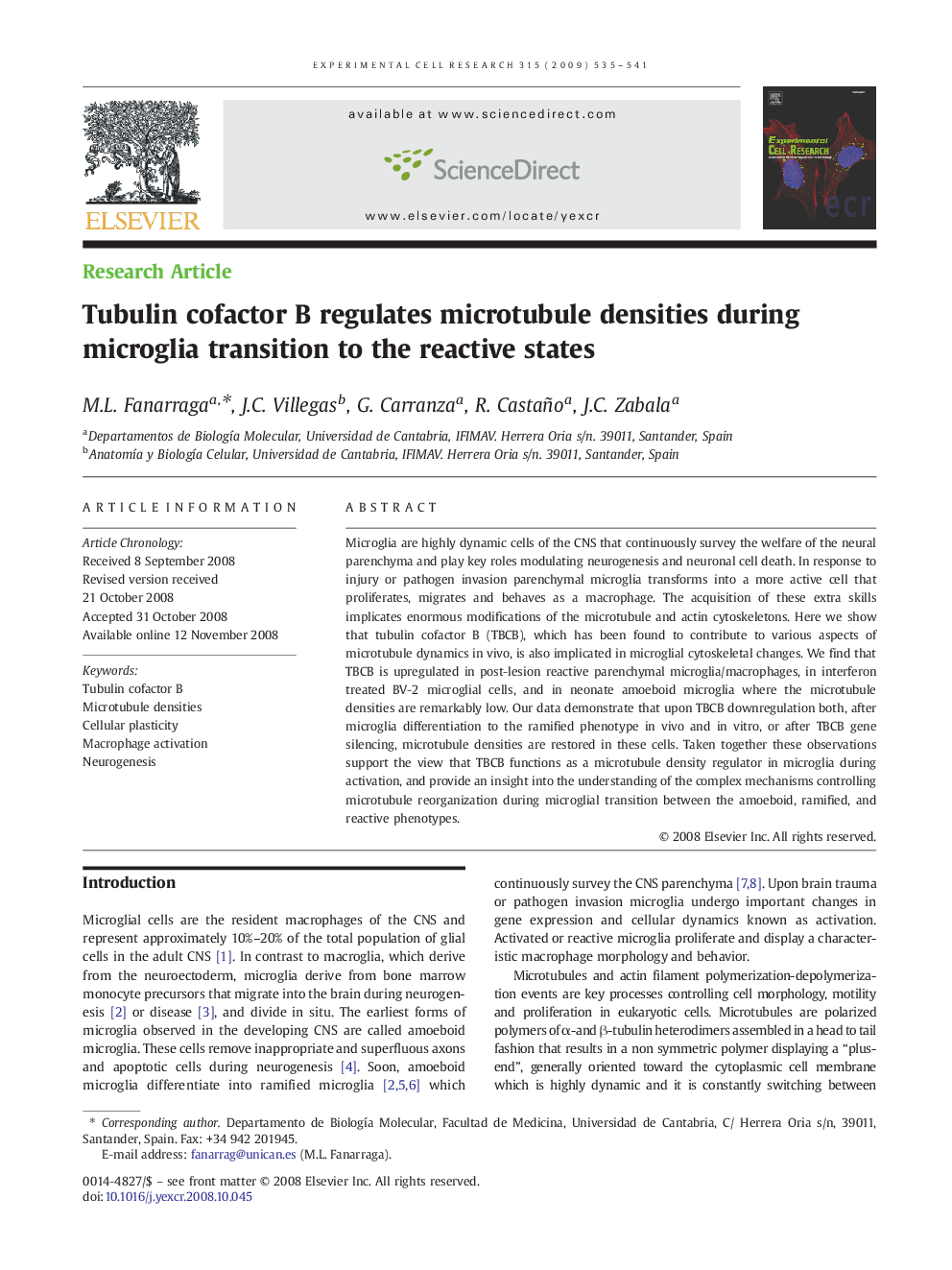| Article ID | Journal | Published Year | Pages | File Type |
|---|---|---|---|---|
| 2131793 | Experimental Cell Research | 2009 | 7 Pages |
Microglia are highly dynamic cells of the CNS that continuously survey the welfare of the neural parenchyma and play key roles modulating neurogenesis and neuronal cell death. In response to injury or pathogen invasion parenchymal microglia transforms into a more active cell that proliferates, migrates and behaves as a macrophage. The acquisition of these extra skills implicates enormous modifications of the microtubule and actin cytoskeletons. Here we show that tubulin cofactor B (TBCB), which has been found to contribute to various aspects of microtubule dynamics in vivo, is also implicated in microglial cytoskeletal changes. We find that TBCB is upregulated in post-lesion reactive parenchymal microglia/macrophages, in interferon treated BV-2 microglial cells, and in neonate amoeboid microglia where the microtubule densities are remarkably low. Our data demonstrate that upon TBCB downregulation both, after microglia differentiation to the ramified phenotype in vivo and in vitro, or after TBCB gene silencing, microtubule densities are restored in these cells. Taken together these observations support the view that TBCB functions as a microtubule density regulator in microglia during activation, and provide an insight into the understanding of the complex mechanisms controlling microtubule reorganization during microglial transition between the amoeboid, ramified, and reactive phenotypes.
